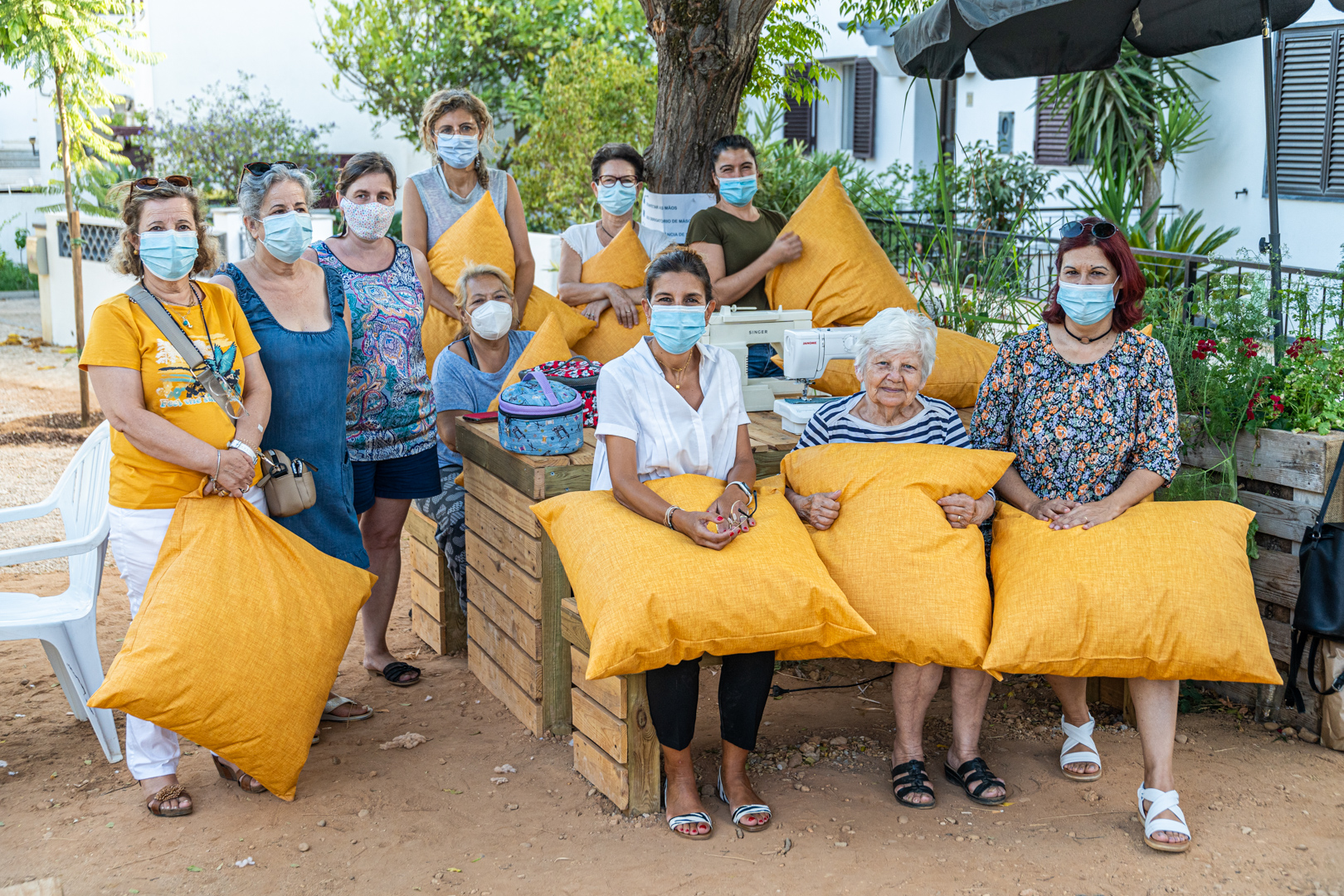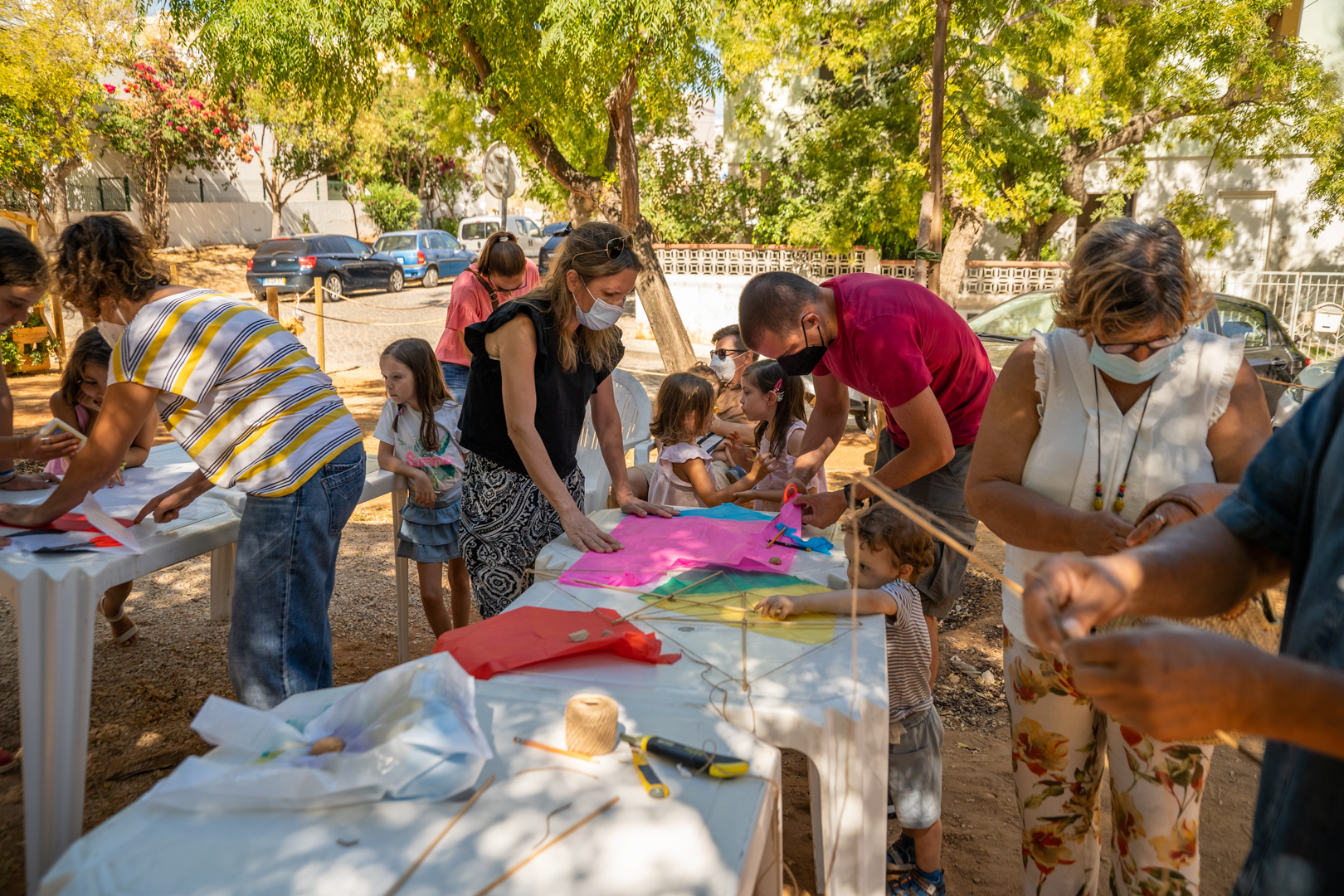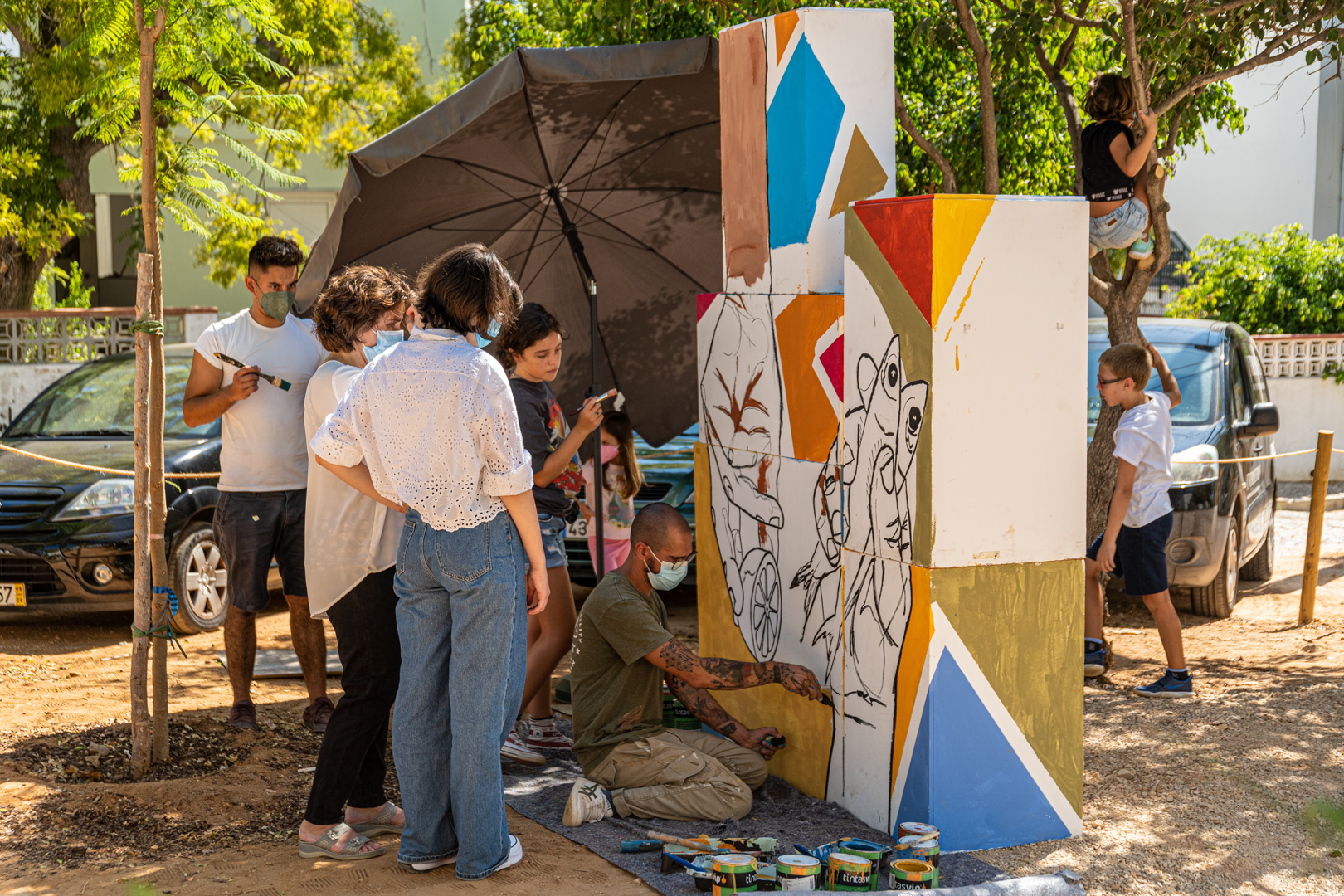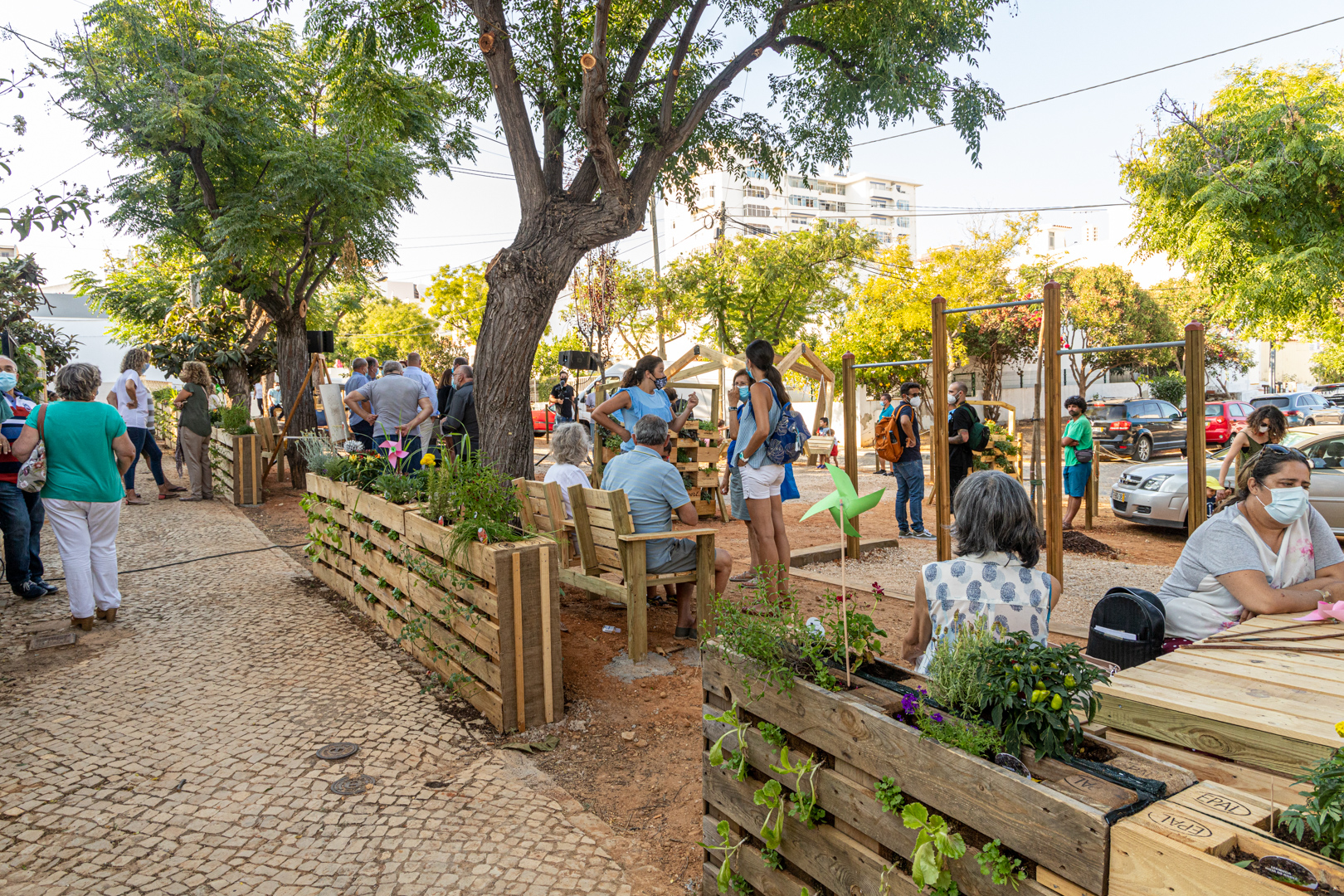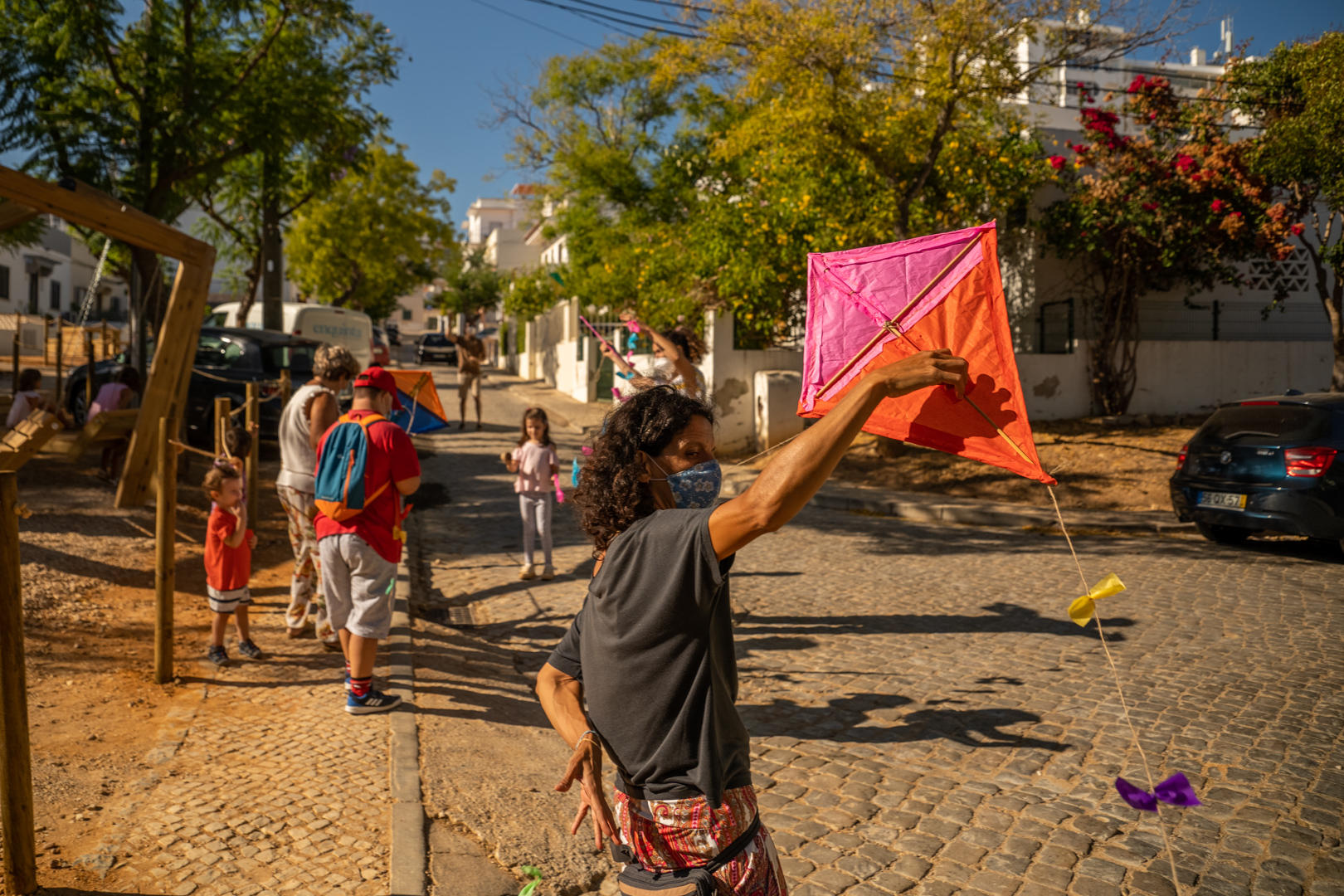Faro Living Street
Basic information
Project Title
Full project title
Category
Project Description
The Faro Living Street project was implemented during 2021 in the city of Faro, at Rua Caldas Xavier, and consisted of the transformation of a space that until then was used exclusively for car parking. The objective was to remove most of the cars from this place and return it to citizens and residents permanently, making it a leisure space that would allow the experimentation of public space, the promotion of neighbourhood relations and the feeling of belonging.
Geographical Scope
Project Region
Urban or rural issues
Physical or other transformations
EU Programme or fund
Which funds
Description of the project
Summary
Faro Living Street project was implemented during 2021 in Faro city at Rua Caldas Xavier,in an abandoned place, without any infrastructure or urban furniture, used exclusively for parking cars.The objective of the project was to transform permanently this place in terms of conviviality, enjoyment and environmental balance, removing the most of the cars from this place and return it to the citizens, promoting neighborhood relations and a sense of belonging.
After collecting opinions from the residents and stakeholders that were actively involved in the project from the beginning, the Municipality started the soil preparation, the installation of urban furniture and social uses equipment,then the process of afforestation and cultivation of various species of plants and trees.After requalification works an ideal green space was created for living, eating, playing, studying, working, reading or just breathing fresh air. The Living Street was equipped with tables, benches, flowerpots, bed swings, ping pong table, sports equipment and bicycle parking, produced with natural materials, whenever possible reused or recycled and purchased to local companies.
To enjoy the space with quality and security, the traffic was restricted, accessible only for residents. With the reduction of cars on the street, visual, noise and air pollution was reduced. In this way, we created the opportunity for people to leave their house to socialize and play outdoors, spending their leisure times with better life quality in a pleasant space built with eco-friendly materials, rich in fruit trees and aromatic plants.
The Faro Living Street inauguration took place on July 20, 2021 and until December several environmental, pedagogical, artistic, cultural and handicraft activities were developed,orientated by and for the residents and the members of the entities involved in the project.
This project was pioneer in Faro as, for the first time, citizens were involved, participating in the whole process.
Key objectives for sustainability
The Faro Living Street project had, from the beginning, sustainability as a major intervention axis. To achieve this goal, the main concern was to get people involved and participating in the whole process, because it’s the only way to ensure the success and the maintenance/ continuity of the project. For that reason, it was created an Action and Reflection Network (ARN) made up of residents and stakeholders.
The residents and stakeholders participated in the conception of the space, working with the Municipality in a co-design process. They were also responsible to implement the green area working in a gardening workshop and then assuming the watering of the vertical vegetable patch and flowers. It’s important to highlight that the species selected are autochthonous and widely used in the diet of residents.
The people mainly involved in the project, adopted the position of guardians, taking care of the space, ensuring that users use it properly. During the animation process, people who joint the ARN collaborated and dinamized the action plan activities, sharing their expertise or personal goods.
The sustainability was visible through the choice of equipment, which were produced with nature materials, mostly reused and recycled. On the other hand, to avoid a negative impact on the environment, the Municipality privileged equipment made in Portugal and contracting national companies to supply the materials. For soil solution, natural and permeable materials (sand/stones/wood) were chosen.
During the project it was possible to observe the improvement of the air quality on the street,which occurred due to the decrease in the concentration of nitrogen dioxide and volatile organic compounds.
This project is an example in the area of sustainability because it consisted of transforming a space, respecting the ideas and desires of the community involving them in every step.In addition, the changes made did not pervert this site,which has always had natural characteristics.
Key objectives for aesthetics and quality
The Faro Living Street project, since its conception, aimed to create a beautiful, functional place where the community of that neighborhood could identify itself again. This story is about a neighborhood from the 60s, a space with history where people used to meet on the street, at a time when cars were rare. With the invasion of cars, the street became a parking lot, an uncharacterized space with no available space for socializing. It was urgent to return this space to citizens, creating socialization and leisure areas and improving its green area.
In this sense, an aesthetic place was created that privileges the quality of the experience, bringing a sense of peace and well-being to those who visit it. Watching its flowering plants and the green of the trees, listening to the chirping of birds, seeing the insects that pollinate the flowers, feeling the aroma of aromatic plants, bring us indescribable sensations especially when we are in the center of a city.
All the effort that has been dedicated to this space, all the love and care, are felt by those who pass by. The quality of life has increased for those who live in the neighborhood and for those who have started to use this space on a daily basis.
The beauty of Faro Living Street is unquestionable and in every corner we can feel the pampering invested in this place – in the swing beds, in the flower pots, in the small works of crafts, in the harmony between all the elements.
This project is an example in the area of aesthetics and quality of experience because it managed to transform an abandoned space into a beautiful, alive space, where feelings, sensations and interactions proliferate at every moment.
Key objectives for inclusion
In the area of inclusion a huge amount of work was done in the Faro Living Street project, due to its participatory nature.
Within a year, the project managed to bring together around 200 people, including residents, local agents/stakeholders (organizations in the areas of culture and education, social, cultural and religious associations, local authorities, an artistic company and security forces) and employees of the municipality.
It was a unique project within the Municipality, as it put several municipal services working in a multidisciplinary way for a common objective, something that was not usual. On the other hand, this was the first project where community was listened when carrying out interventions in public space, having led to a co-design process with residents, stakeholders and civil servants.
The inclusion was also worked by involving several associations working with people with mental illness and disability. The members of these entities participated in many phases of the project – diagnosis, creation of the space, action plan conception, implementation of activities, maintenance and evaluation. These singular and special people felt integrated and accepted in the community, they finished the project with more courage, hope and motivation to participate in the social life of the community in which they are inserted. It was beautiful to see this evolution.
The residents, civil society and public servants were also quite involved through the Cities Engage campaign where they commit to adopting more sustainable behaviors which are published online and disseminated throughout the city in big posters format.
This project also brought safety conditions for street users, as it restricted considerably the cars on the street - that allows children and the elderly to play and walk more safely nowadays. Now, it is common to see people of all ages enjoying the space – grandparents and grandchildren, parents and children, young couples.
Results in relation to category
The sense of belonging was developed because people feel the project as their own, because they thought about it, they discussed the possibilities, they decided what’s better and now they live and enjoy the place. The neighbourhood relationships got stronger – now people know and talk each other and they help those who need it most. Nowadays, it’s possible to observe a greater interaction and mutual assistance among residents.
Many residents referred that with the project they had the opportunity to meet neighbours, socialize and participate in activities, transcribing: “I know the neighbours better, it is very good”, “I met many neighbours that I did not know”, “We are more close”, “We do activities together”.
People who lived in the neighborhood for many years report that now they are proud of the place where they live.
The partnerships between the Municipality and various stakeholders involved in the project were strengthened and was developed a great knowledge about the work carried out by the various associations and entities located in the surrounding area of Rua Caldas Xavier. For these reasons, now the organizations are working together to achieve common goals and to turn the city of Faro a better place to live.
It is possible to feel the sense of belonging also in the Municipality of Faro, in the various municipal services, where the teamwork developed within the project made people proud of their work.
The commitment/cooperation between the various parties involved in the project – Municipality of Faro, residents and local agents/ stakeholders – in order to continue to develop the work it's very gratifying for everyone.
The recognition by the general public of the work carried out together with the community shows us that people need to be involved to feel part of the social life and to feel happy in their daily basis.
How Citizens benefit
At the beginning of the project, in January 2021, the Municipality promoted door-to-door visits to the residents of the street and the entities that are in the adjacent streets, since that Rua Caldas Xavier is only residential. These visits made it possible to publicize the project and collect the contacts of people and organizations for a future approach.
Continuing the process of community involvement, their participation was then requested by completing the survey in order to validate the ideas presented in the application of the project and collect existing suggestions and needs.
With the objective of promoting community participation and ensuring the sustainability of the project, the Municipality encouraged the formation of an Action and Reflection Network that brought together around 50 members, including residents, local agents (organizations in the areas of culture and education, of local authorities, social, cultural and religious associations, an artistic company and the security forces) and employees of the municipality. In numbers, around 25 residents, 20 members of local entities and 15 civil servants participated in the network. This Network, in a democratic and inclusive way, successfully promoted periodic meetings between its members, creating moments for sharing opinions, interests and needs.
In conclusion, residents and stakeholders were involved by completing the questionnaires (at the beginning and in the end of the project for evaluation); participating in the meetings of the Action and Reflection Network; voting on the various proposals presented by the Municipality through the network inputs, and were also involved in the promotion of activities.
This teamwork allowed to turn Rua Caldas Xavier into a welcoming and functional place, ideal for socializing and relaxing, playing, studying, working or just breathing fresh air.
Physical or other transformations
Innovative character
The Faro Living Street was a very innovative project because within the Municipality of Faro we had never worked in this way. Teamwork was carried out between various municipal services, and much of the work carried out under the project was developed internally.
On the other hand, some goods and services, for which the Municipality was unable to respond, were acquired locally from several companies and not just one (contract) as usual.
Another innovation was the fact that equipment built exclusively for this project and made with reused materials was placed.
This project was a success as it exceeded expectations. Rua Caldas Xavier was the target of an intervention where was improved the pavement; the place was equipped with original urban equipment and which were mostly produced with natural materials. The bicycle circuit was also properly implemented, and there is now a place for the little ones to learn to ride a bicycle. The green space was expanded – ornamental trees and fruit trees were planted and an urban vegetable garden was created where various plants and vegetables are currently grown that complement the diet of the residents.
The Municipality made an important contribution to the requalification of the space with the availability of labor and materials that, together with the amount/grant of the project(EUKI Living Streets), allowed us to have today a very beautiful, functional space that receives daily dozens of people who go there to socialize, practice sports, take care of the urban vegetable garden or simply to breathe fresh air.
The project had a great impact on the community of Faro, as for the first time the population was called to intervene and be part of the process.
Learning transferred to other parties
Regarding the internal meetings about the transferability of the Living Streets project to another places in the city and the technical visits to some places mentioned as the most suitable for the creation of new Living Streets, the following conclusions were taken.
It was found that some of the places thought of initially are not appropriate: the Cobital space is not adequate due to the fact that has already a leisure area and because it is an important parking area for many cars; the playground on Rua Humberto Delgado that needs to be dismantled was a place with potential but is very close to Rua Caldas Xavier, where the first Living Street was implemented.
Regarding the square in the neighbourhood of S. Luís (next to Rua Horta do Rodolfo) and the square on the Nossa Sra. Da Saúde road (next to Escola EB 2, 3 D. Afonso III), the Municipality considers that they are the most suitable places for welcoming of Living Streets and that need a more urgent intervention, not only in terms of rehabilitation of the public space, but also because the Municipality wants to intervene in these neighbourhoods at a social and community level because of the social issues around currently.
In the visits made to Faro Living Street with the presidents of the Parish Councils, the Municipality decided to develop Living Streets projects also in the parishes that are further away from the city centre. In this sense, between 2022 and 2023, the Municipality intends to develop, in partnerships with the Parish Councils, Living Streets in the parishes of Conceição and Montenegro.
Another important aspect is that the Municipality intends to launch an open call so that neighbourhoods can submit their projects. The selection of projects to be implemented will be made by the population, that is, the Municipality will disclose 5 options and give a deadline for the public to vote. In this way, the process is intended to be even more democratic.

